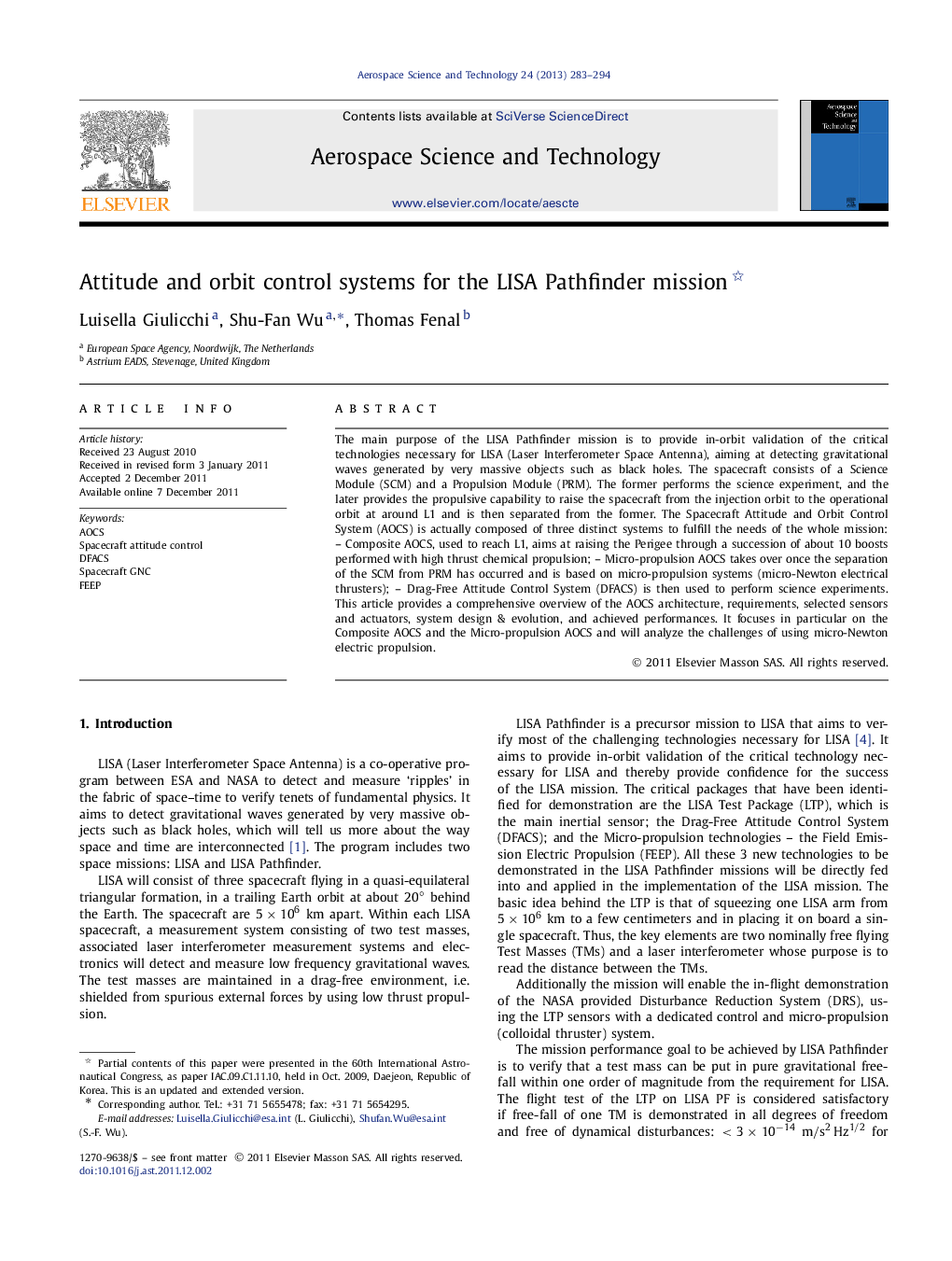| Article ID | Journal | Published Year | Pages | File Type |
|---|---|---|---|---|
| 1718339 | Aerospace Science and Technology | 2013 | 12 Pages |
The main purpose of the LISA Pathfinder mission is to provide in-orbit validation of the critical technologies necessary for LISA (Laser Interferometer Space Antenna), aiming at detecting gravitational waves generated by very massive objects such as black holes. The spacecraft consists of a Science Module (SCM) and a Propulsion Module (PRM). The former performs the science experiment, and the later provides the propulsive capability to raise the spacecraft from the injection orbit to the operational orbit at around L1 and is then separated from the former. The Spacecraft Attitude and Orbit Control System (AOCS) is actually composed of three distinct systems to fulfill the needs of the whole mission: – Composite AOCS, used to reach L1, aims at raising the Perigee through a succession of about 10 boosts performed with high thrust chemical propulsion; – Micro-propulsion AOCS takes over once the separation of the SCM from PRM has occurred and is based on micro-propulsion systems (micro-Newton electrical thrusters); – Drag-Free Attitude Control System (DFACS) is then used to perform science experiments. This article provides a comprehensive overview of the AOCS architecture, requirements, selected sensors and actuators, system design & evolution, and achieved performances. It focuses in particular on the Composite AOCS and the Micro-propulsion AOCS and will analyze the challenges of using micro-Newton electric propulsion.
